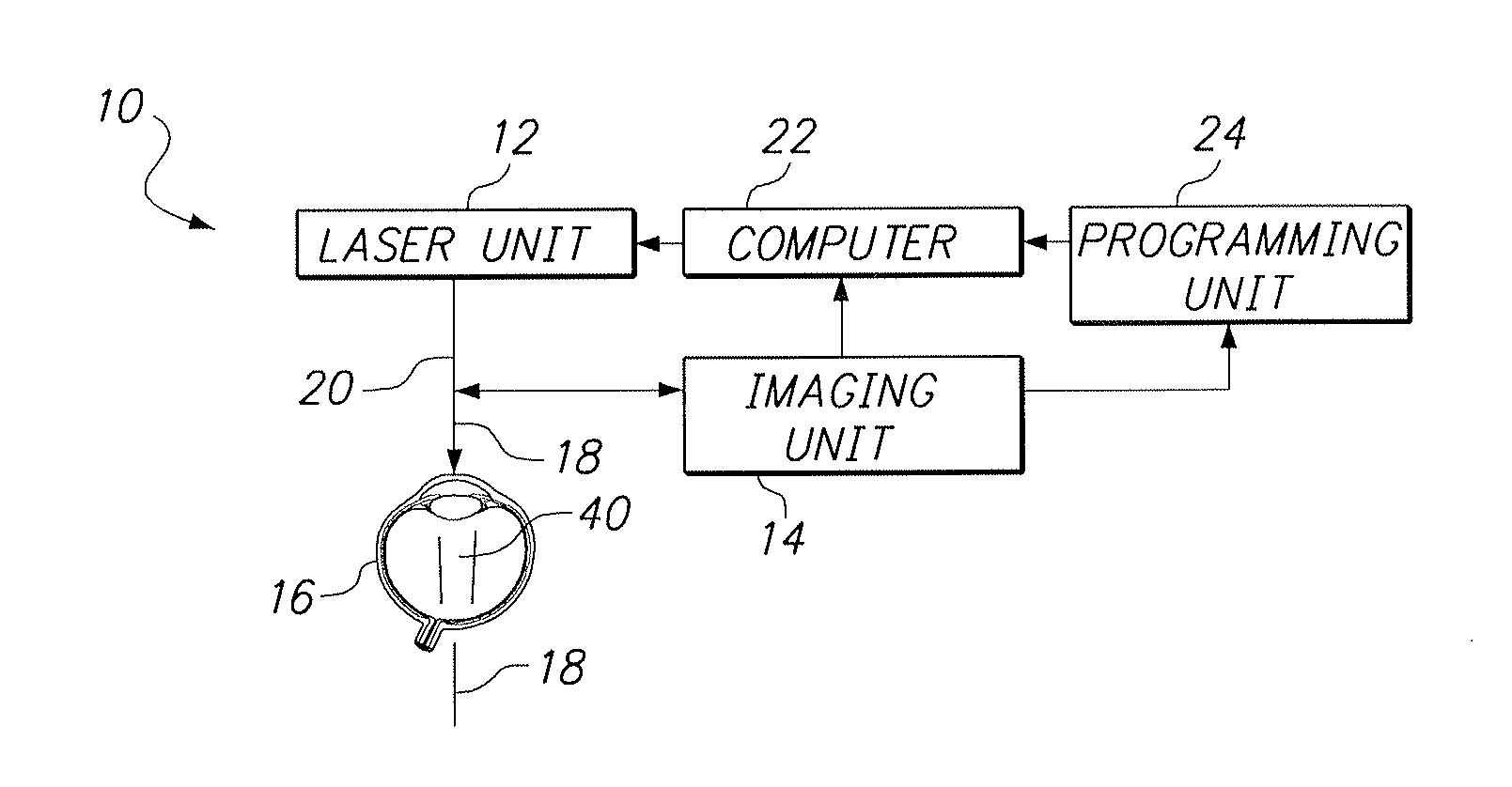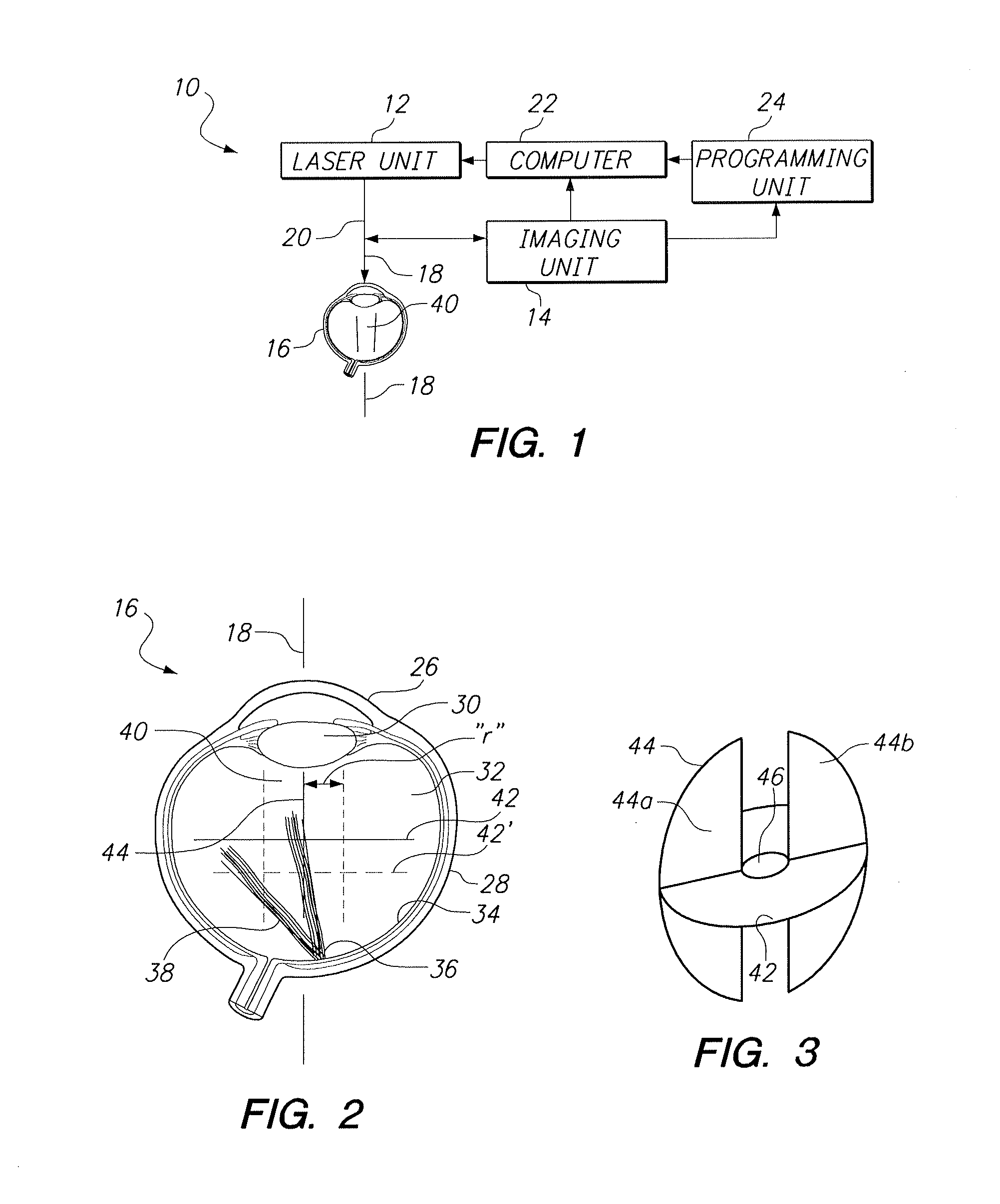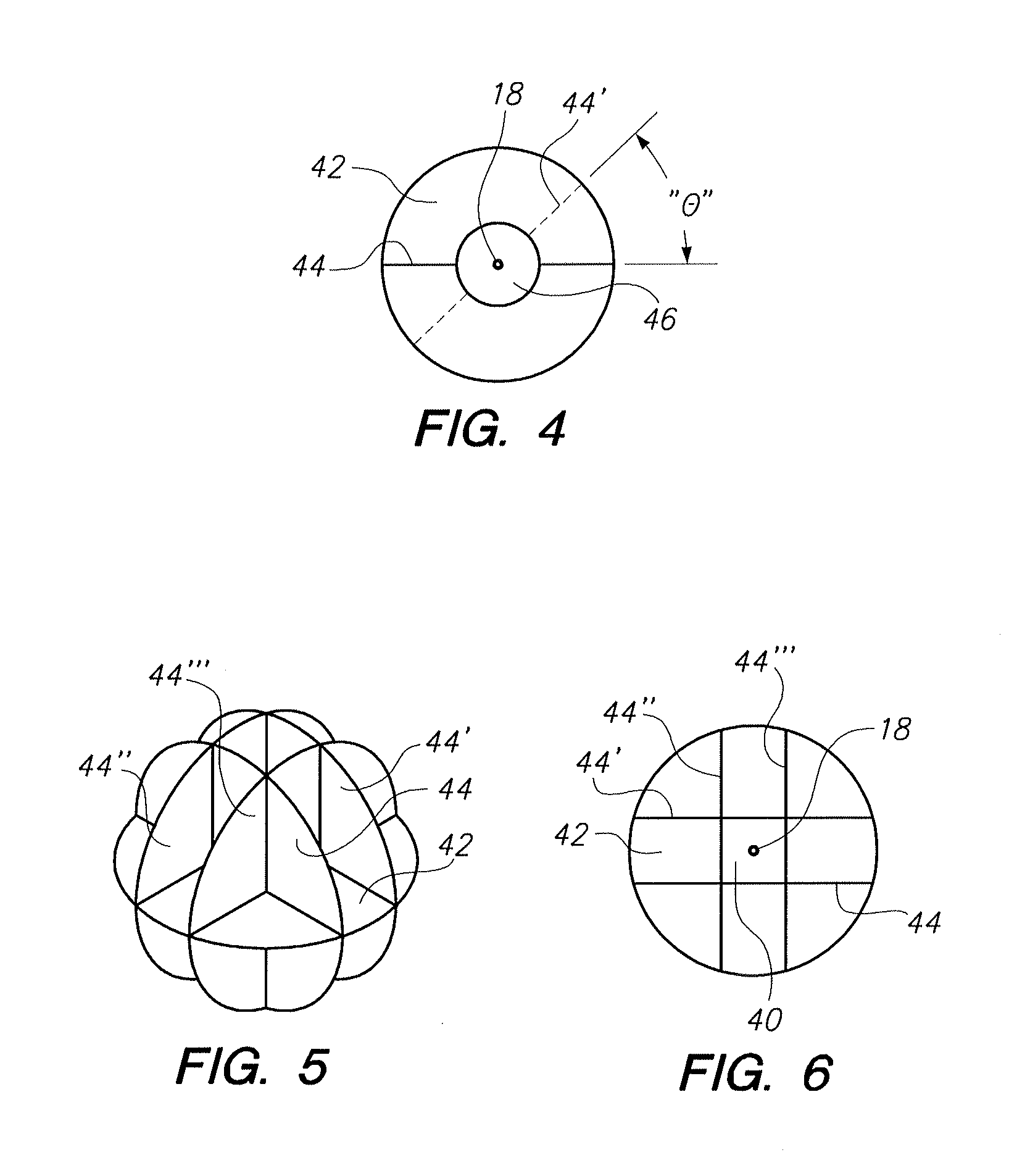Interventional Treatments for VitreoRetinal-Interface Syndromes
a vitreoretinal interface and vitreous humor technology, applied in the field of vitreoretinal interface syndrome interventional treatment, can solve the problems of vitreous humor undergoing anomalous or partial separation from the retinal surface, unable to contribute to the optical functionality of the retina, and the vitreous gel starts to degenerate, so as to eliminate the adhesion of vitreoretinal and enhance the effect of the protocol
- Summary
- Abstract
- Description
- Claims
- Application Information
AI Technical Summary
Benefits of technology
Problems solved by technology
Method used
Image
Examples
Embodiment Construction
[0030]Referring initially to FIG. 1, a system in accordance with the present invention is shown and is generally designated 10. As shown, the system 10 includes a laser unit 12, and an imaging unit 14, that are each respectively positioned for optical interaction with an eye 16. More specifically, the laser unit 12 and the imaging unit 14 are positioned to direct their respective light beams along an axis 18.
[0031]For the present invention, the axis 18 is defined relative to selected anatomical features of the eye 16, and it will normally be a reference base that is well known in the pertinent art, such as a visual axis, a central axis or an optical axis. The laser unit 12 may also be of a type that is well known in the pertinent art and is capable of generating a pulsed femtosecond laser beam 20 (i.e. a beam having a sequence of laser pulses with ultra-short pulse durations [e.g. less than approximately 500 fs]). In particular, a laser beam 20 capable of passing through tissue to a...
PUM
 Login to View More
Login to View More Abstract
Description
Claims
Application Information
 Login to View More
Login to View More - R&D
- Intellectual Property
- Life Sciences
- Materials
- Tech Scout
- Unparalleled Data Quality
- Higher Quality Content
- 60% Fewer Hallucinations
Browse by: Latest US Patents, China's latest patents, Technical Efficacy Thesaurus, Application Domain, Technology Topic, Popular Technical Reports.
© 2025 PatSnap. All rights reserved.Legal|Privacy policy|Modern Slavery Act Transparency Statement|Sitemap|About US| Contact US: help@patsnap.com



